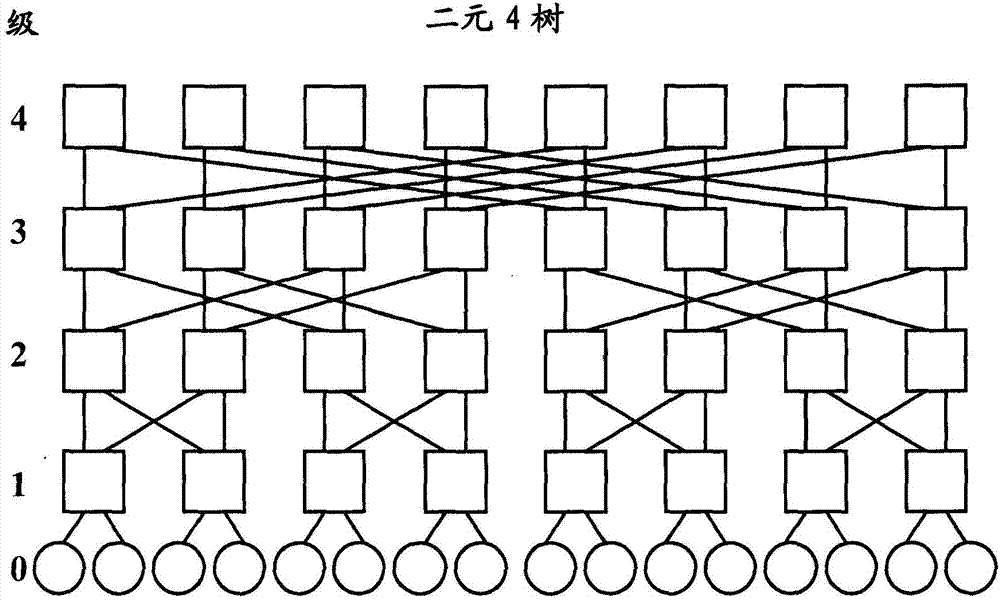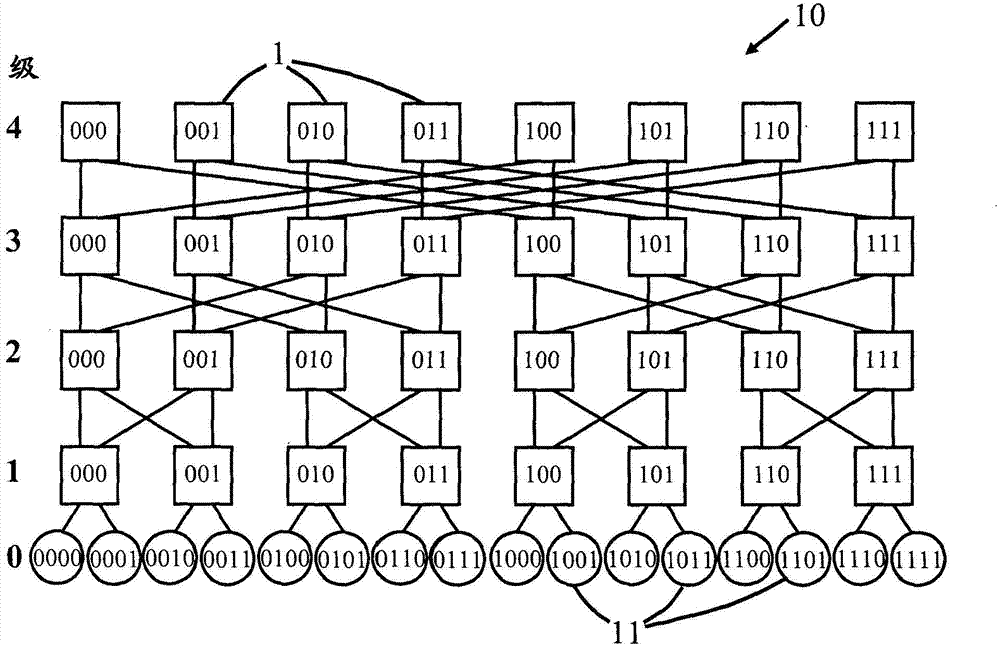Deadlock-free routing of data packets in fat tree networks
A fat tree network and routing technology, applied in data exchange networks, digital transmission systems, electrical components, etc., to solve problems such as poor performance and failure to utilize tree multipath capabilities
- Summary
- Abstract
- Description
- Claims
- Application Information
AI Technical Summary
Problems solved by technology
Method used
Image
Examples
Embodiment Construction
[0033] figure 2 It is a simplified schematic diagram of a network switch 1, and the network switch 1 is used to realize the routing method embodying the present invention in a fat tree network. In this example, Switch 1 has four ports for figure 1 Connections of binary fat tree topologies in . The two upward facing ports are labeled u1 and u2, while the two downward facing ports are labeled d1 and d2. The switch includes the usual network interface circuitry (I / F) 2 for sending and receiving data packets via the network links connected to the ports. The switch fabric 3 includes the usual buffers and connections via which received packets pass through the switch between an input port and a corresponding output port for its routing across the network. This process is controlled by the switch controller 4. Switch fabric 3 supports two virtual channels, designated VC0 and VC1 , for transporting data packets in the network. Thus, by logical partitioning of buffers etc., under...
PUM
 Login to View More
Login to View More Abstract
Description
Claims
Application Information
 Login to View More
Login to View More - R&D
- Intellectual Property
- Life Sciences
- Materials
- Tech Scout
- Unparalleled Data Quality
- Higher Quality Content
- 60% Fewer Hallucinations
Browse by: Latest US Patents, China's latest patents, Technical Efficacy Thesaurus, Application Domain, Technology Topic, Popular Technical Reports.
© 2025 PatSnap. All rights reserved.Legal|Privacy policy|Modern Slavery Act Transparency Statement|Sitemap|About US| Contact US: help@patsnap.com



